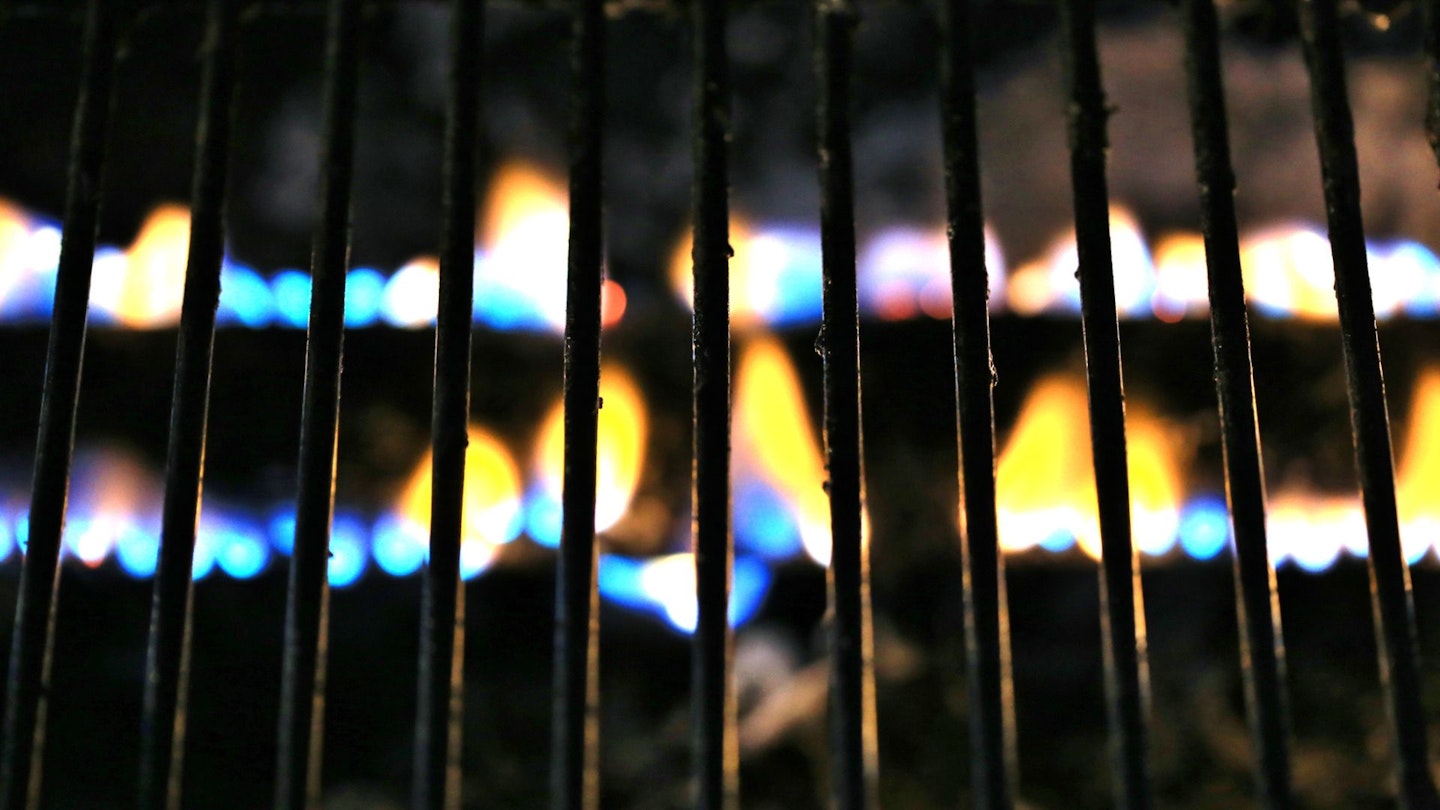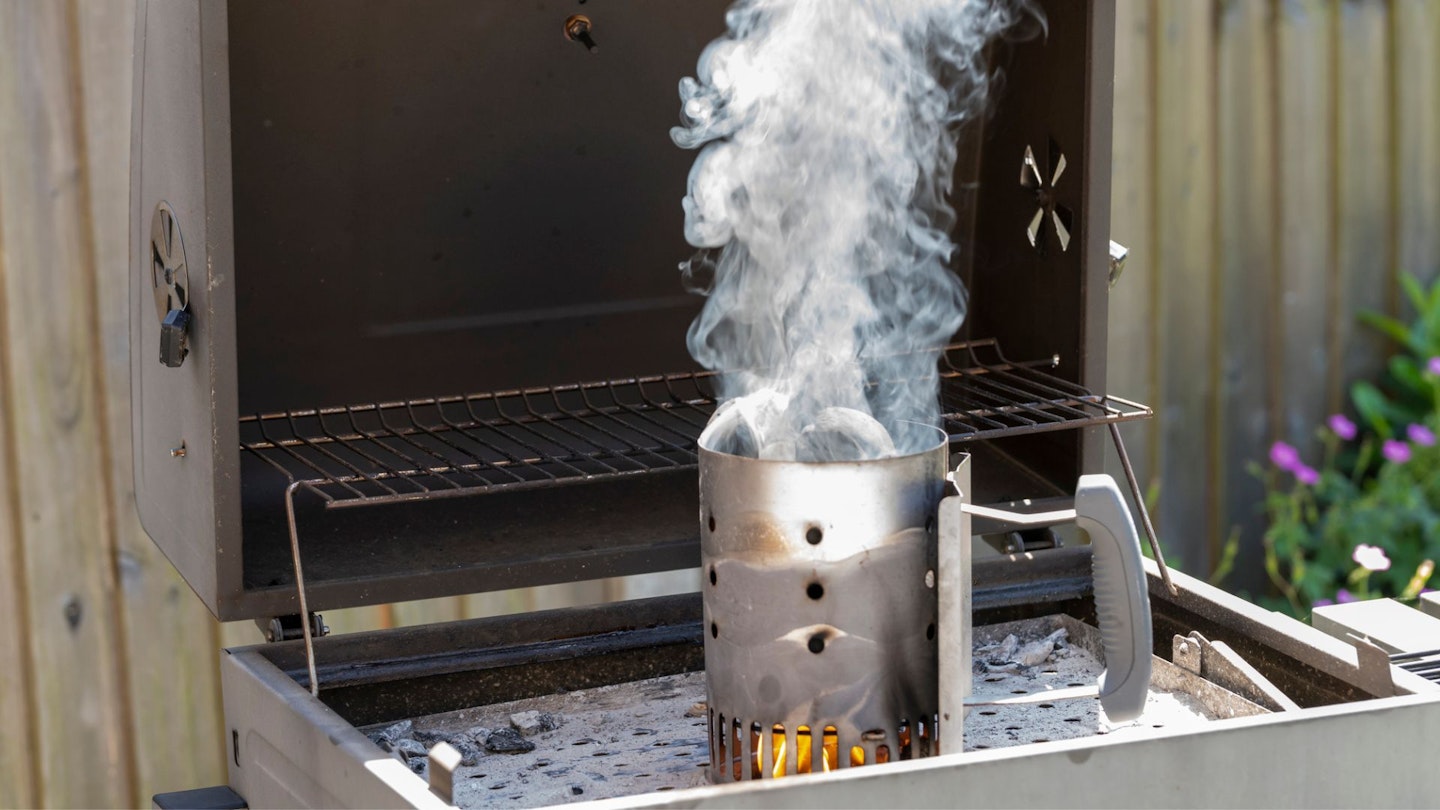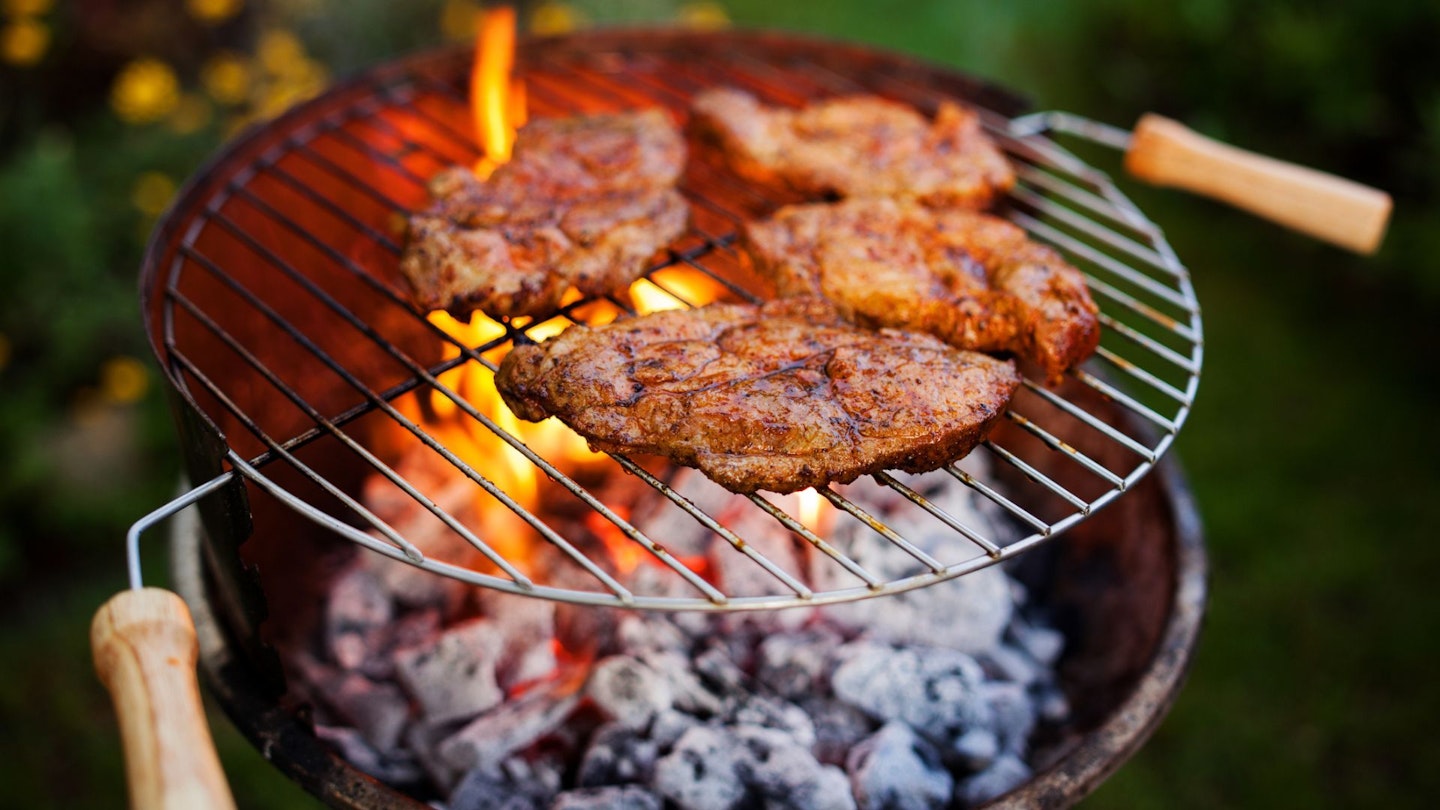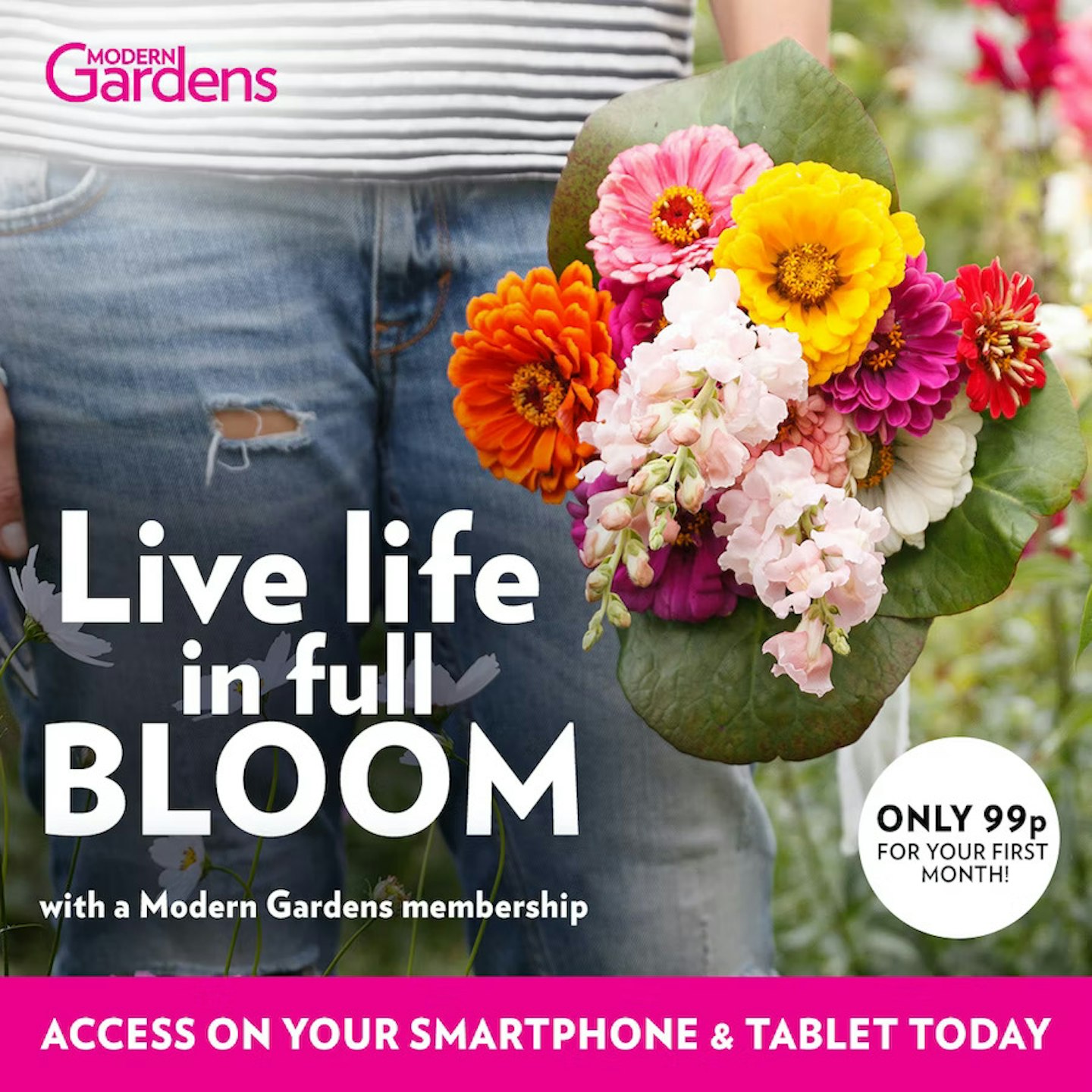The best way to light a BBQ is the first hurdle for newbies to the world of grilling. You can't just wing it. That's why Modern Gardens has put together a short guide to lighting your new BBQ. In this article, we cover gas, charcoal, hybrid and charcoal kettle BBQs. Plus, we answer frequently asked questions about BBQ fuel.
Art, science and guesswork all have a part to play in BBQing. Remember learning about combustion at school? Combustion happens when a fuel rapidly reacts with oxygen - emitting light, heat and flame. Therefore, airflow is a crucial part of lighting a successful BBQ fire. If your grill has vents it will take in air at the bottom vent and escape from the top vent. If you starve a fire of oxygen it will eventually fizzle out. Open the vents more for a higher temperature and faster cooking (i.e. for fish) or for lower, longer cooking partially close the vents (i.e. for ribs).
If you want to avoid the dreaded burn on the outside, raw on the inside, it's a good idea to invest in a meat probe and a thermometer for your BBQ (if it doesn't already have an in-built thermostat). This will help you to estimate how long your food needs to cook. Also, set a stopwatch so you know how long your food has been on the grill and when you need to check it.
Safety first
Regardless of which type of BBQ you are using, always take safety precautions. Position your BBQ on a flat surface away from vegetation and have a bucket of water nearby. Additionally, use protective gloves and long-handle tongs that are specifically designed for BBQs. Finally, always keep children and animals away from BBQs that are in use. Becoming a grill master takes practice, so be patient. _Mi-steak_s happen... soon your loved ones will be saying "well done".

How to light a gas BBQ
The benefit of a gas BBQ is that it's easy to use, fast and efficient. The downside is that you don't get the smoky flavour that comes from a charcoal grill.
To operate, make sure the lid is up on the grill and turn the gas valve on. You'll hear the gas coming through. Next, turn the burners to the lighting position and press the automatic ignition. Alternatively, find the hole in the side of the grill and use a safety gas lighter to ignite the gas. Place the lid down and leave the BBQ for 15 minutes before you start cooking.
Before cooking, take the meat out of the fridge to allow it to come to an ambient temperature. Adjust the burners depending on the temperature you want. Remember to close the gas valve after use and clean the grate after grilling.
How to light a charcoal BBQ
First, take the grilling rack out and put it to one side. Get a bag of charcoal briquettes and fill the BBQ with a layer of charcoal. Scrunch up newspaper and place a few on top of the charcoal, especially in the centre.
Next, pour lighter fluid over the coals. Be sure to put the lid back on and put the bottle safely to one side as it's a highly flammable product. Use a BBQ lighter or long matches to light the BBQ in a couple of places to ignite the lighter fluid.
Give the flames a chance to spread. Do not add anymore lighter fluid. The charcoal will need 20-30 minutes to reach cooking temperature. You'll know because the coals will be white hot and the flames will have died down.

Create a split-level fire. One half is a single layer of charcoal and the other half is a triple layer. This means one side of the BBQ is cooler than the other. This is perfect for searing meat on the hotter half and letting vegetables cook slowly on the cooler half.
Alternatively, the cooler side can be used for finishing off meat that's close to burning on the outside. Put the metal grill back on the BBQ and you're ready to cook. Fat will drip through the grate on to the coals causing flames, but it's nothing to worry about. A top tip: oil your food rather than the grill grate. This ensures the food won't stick.
Charcoal BBQ tips:
• Buy good quality charcoal that lights and burns well.
• Use a chimney starter to make lighting the charcoal easier. If you don't have a chimney, arrange the firelighters and charcoal in a stack to help it ignite. The charcoal is compacted so it gets hotter quicker. It also avoids the need for lighter fluid.
• When the coal is white hot with red centres it's ready for cooking.
• Consider whether your food need direct or indirect heat and position on the BBQ accordingly.
• Use a food thermometer to check food is evenly cooked through.
How do I light a charcoal kettle grill?
First, make sure the bottom vent is open because you need airflow to get the fire burning. Use a chimney starter as this is the best way to get your fire going. Fill the chimney halfway with charcoal. Place two lighter cubes on the grill grate. Light them and place the chimney starter on top.

It will take 10-15 minutes for the charcoal to be completely white hot. Use BBQ-specific heat-proof gloves to tip the charcoal out onto the grate and spread the coals out evenly on one side using long-handle tongs. The other half of the BBQ is a safe zone for food that needs resting or keeping warm.
Next, place the grill grate on top. Then, place the lid on the BBQ with the dome vent wide open so the charcoal is fed by oxygen and reaches the higher temperature that's needed for searing. Preheat the grill for 15 minutes. Oil your food and it's ready to grill.
How do I light a hybrid BBQ?
A hybrid BBQ uses both gas and charcoal so you get the smoky flavour along with the convenience of gas. The gas burner ignites the charcoal. Hybrid BBQs have a drawer that can be filled with wood or charcoal. The drawer can be left empty to cook with gas for a fast and easy BBQ. Or add charcoal or wood to the drawer to ignite the fuel.
You can turn the gas off or leave it on for a higher temperature. Hybrid BBQs are versatile and allow for smoking, slow cooking, roasting as well as grilling. Some models even have varied heat dynamics for convection cooking.
FAQs
What is charcoal?
Charcoal is a man-made product. It's wood that has been slowly burned at a high temperature in a low oxygen oven, turning it to carbon. This carbonisation process removes all the water content and reactive compounds, leaving a porous, light black carbon. Charcoal burns steadier, hotter and produces less smoke than burning wood.
How much charcoal should I use?
The more charcoal you use, the hotter your BBQ will be. But actually, it pays to be economical with the briquettes so you don't waste them. A small BBQ will require around 30 briquettes ranging up to 75 briquettes for larger kettle grills. Using a starter chimney is a great idea as it acts as a charcoal measuring cup. If you want to sear meat, use three quarters of a chimney. Alternatively, if you're grilling something delicate you'll only need a quarter of the amount.
Is propane or butane gas better for BBQ grilling?
Propane and butane are both a form of natural gas that are a by-product of oil extraction. Propane is a highly flammable gas. Through pressurisation, it becomes liquified and is sold in gas bottles for domestic and commercial use. It's used for heating and cooking.
Butane is also a highly flammable gas, with different properties to propane. It's used as a fuel and refrigerant gas.
The boiling temperature of the gas is crucial. Propane has a boiling temperature of -42 degrees Celsius whilst butane has a higher boiling temperature -2 degrees Celsius. It means propane is better for use in colder climates. It also exerts more pressure than butane at the same temperature, making it better for outside storage and use all year round.
Adams Gas weigh up the benefits of each gas for BBQs:
• Propane burns efficiently in any weather
• Propane gas canisters are easy to connect to a BBQ and use
• Food tastes cleaner
• It lights instantly and burns efficiently
• Propane-powered BBQs are easy to clean - just wipe the grill
On the other hand...
• Butane also ignites instantly and burns efficiently
• Butane is slightly cheaper than propane
• Butane burns cleaner than propane, so it's an environmentally better option
• Easy to use
• Best used in warm weather, but it won't flow in cold weather
In conclusion, if you're looking for the best BBQ gas for the Great British climate, opt for propane.

What to read next:
Discover everything you need to know to make your outside space look fantastic, quickly and easily, with hundreds of simple ideas, designer tricks, affordable products and expert advice with a Modern Gardens Membership. Find out more about the benefits of being a Member now.
Natalie Knowles is a Homes & Garden Product Writer for Modern Gardens, specialising in garden trends. When she's not flexing her mow-how, Natalie is a successful artist and illustrator.

